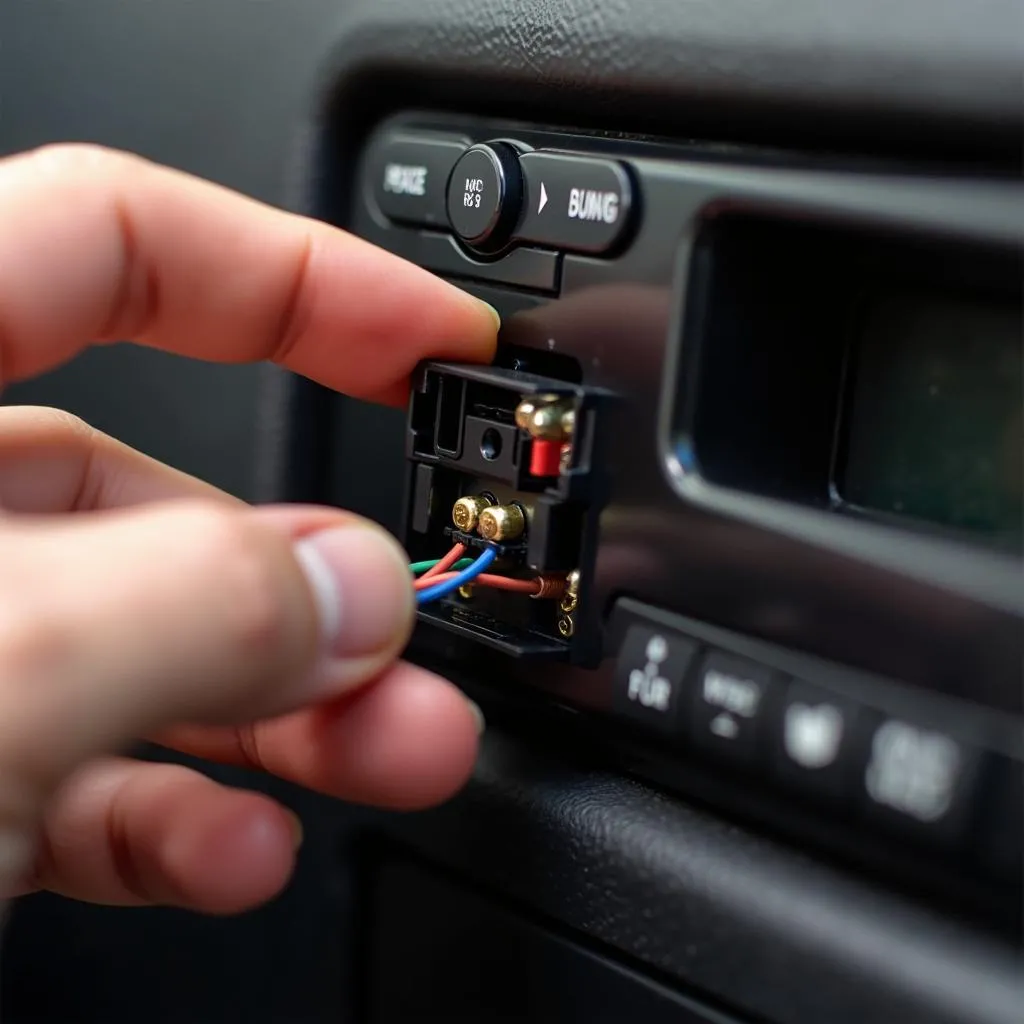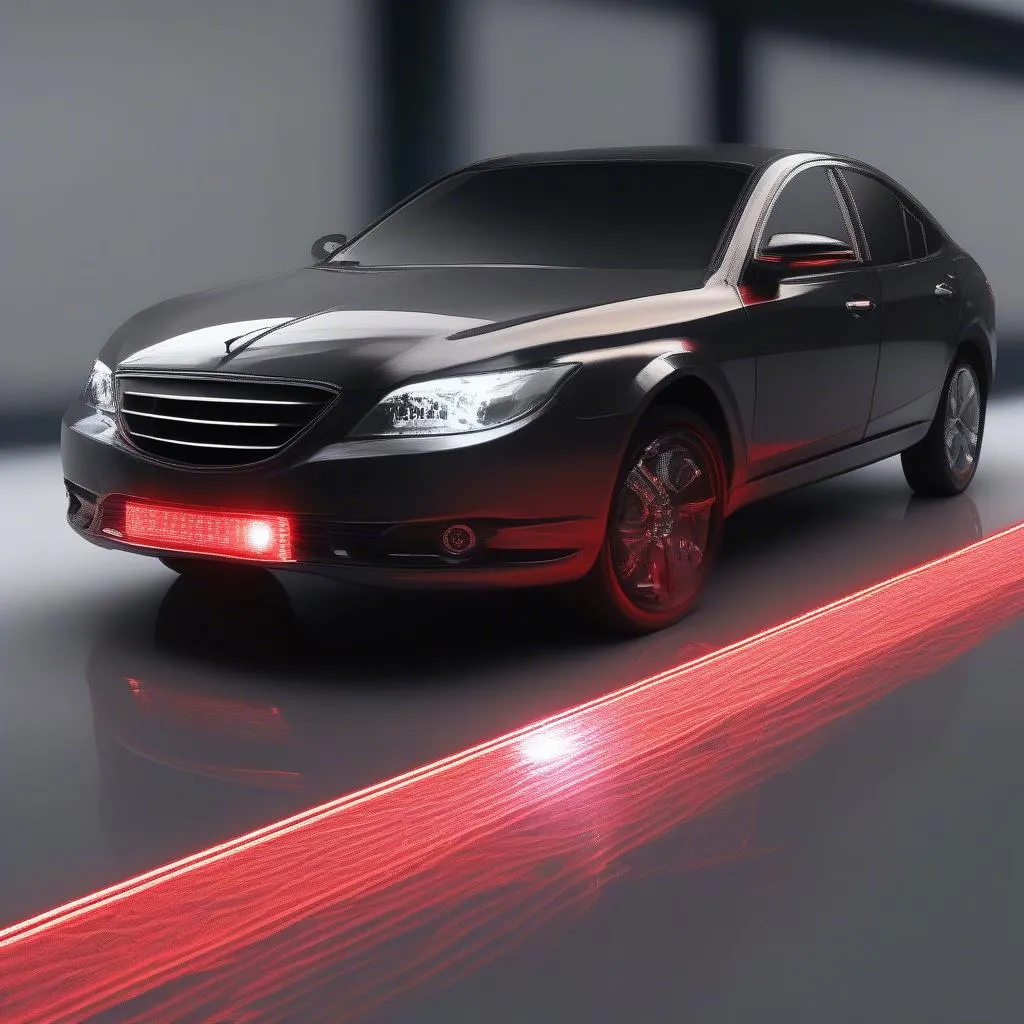The car hand brake warning light is an essential safety feature in your vehicle. When illuminated, it signals a potential problem with your braking system that shouldn’t be ignored. Whether it’s a persistent glow or an intermittent flicker, understanding why this light turns on and knowing how to address the issue can save you from potentially dangerous driving situations.
Common Causes of the Car Hand Brake Warning Light
Several reasons can cause your car hand brake warning light to come on. Some of the most common culprits include:
- Engaged Parking Brake: The simplest and most frequent reason is an improperly disengaged parking brake. It might seem obvious, but it’s easy to overlook. Always ensure your parking brake is fully released before driving.
- Low Brake Fluid Level: Your car needs adequate brake fluid to function properly. If the fluid level drops too low, the warning light will illuminate. Low brake fluid could indicate a leak in the braking system, requiring immediate attention.
- Worn Brake Pads: Brake pads naturally wear down over time. As they thin, a sensor triggers the warning light, reminding you to replace them. Driving with worn brake pads compromises your braking efficiency and safety.
- Faulty Brake Light Switch: The brake light switch activates your brake lights when you press the pedal. A malfunctioning switch can confuse the car’s system, triggering the hand brake warning light along with the brake lights.
- Electrical Issues: Problems with the wiring, connectors, or sensors in the braking system can cause a false warning light. Corrosion, loose connections, or damage to these components can disrupt the signal flow.
What to Do When Your Car Hand Brake Warning Light Turns On
If you notice your car hand brake warning light illuminated while driving, the first and most important step is not to panic.
- Safely pull over: As soon as it’s safe, steer your car to the side of the road, away from traffic.
- Check your handbrake: Ensure the handbrake lever is fully down and disengaged.
- Inspect your brake fluid: Carefully open the brake fluid reservoir and check the fluid level. It should be between the “Min” and “Max” lines.
- Don’t drive if…: If you notice a significant drop in brake fluid, see visible leaks, or suspect any issue beyond a disengaged handbrake, do not continue driving. Call for roadside assistance or have your car towed to a trusted mechanic.
Diagnosing and Fixing the Problem
While a disengaged parking brake and low brake fluid are easy to address, other causes require professional diagnosis and repair:
- Brake Pad Replacement: A qualified mechanic will inspect your brake pads and replace them if necessary. They’ll also check the brake rotors for any wear and tear.
- Brake System Inspection: For suspected brake fluid leaks or other issues, a mechanic will thoroughly inspect your entire braking system, including the lines, calipers, and cylinders.
- Electrical System Check: If a faulty brake light switch or electrical problem is suspected, the mechanic will test the related components and wiring for proper function.
“Ignoring your car’s warning lights is like ignoring a distress signal,” says John Smith, a certified automotive electrician with over 20 years of experience. “These lights are your car’s way of communicating a potential problem. Addressing them promptly can prevent costly repairs and keep you safe on the road.”
Preventing Future Problems
Regular car maintenance can significantly reduce the chances of encountering hand brake warning light issues:
- Check your brake fluid regularly: Make it a habit to inspect your brake fluid level at least once a month.
- Follow the recommended brake pad replacement schedule: Consult your owner’s manual for guidance on how often to replace your brake pads.
- Address any brake-related issues promptly: Don’t ignore unusual noises or changes in brake pedal feel.
Remember, your car’s braking system is crucial for your safety. Understanding the car hand brake warning light and acting swiftly when it appears ensures your vehicle remains in optimal condition for safe driving.
FAQ
Q: Can I drive a short distance with the hand brake warning light on?
A: It depends on the cause. If it’s just an engaged parking brake, then yes. However, if it’s due to low brake fluid or other issues, it’s dangerous to continue driving.
Q: How much does it cost to fix a car hand brake warning light issue?
A: The cost varies depending on the cause and your car’s make and model. A simple brake fluid top-up can be inexpensive, while extensive brake repairs can be significantly more costly.
Q: How often should I get my brakes inspected by a professional?
A: It’s recommended to have your brakes inspected by a qualified mechanic at least once a year or every 12,000 miles, whichever comes first.
If you’re experiencing issues with your car’s brake warning light, don’t hesitate to check out our articles on loose wire brake warning light, BMW Z3 brake pad warning light reset, 2005 Chevy Colorado emergency brake false warning, Seat Ibiza 2018 warning lights, or Dodge Journey brake warning light for more specific information and troubleshooting tips.


